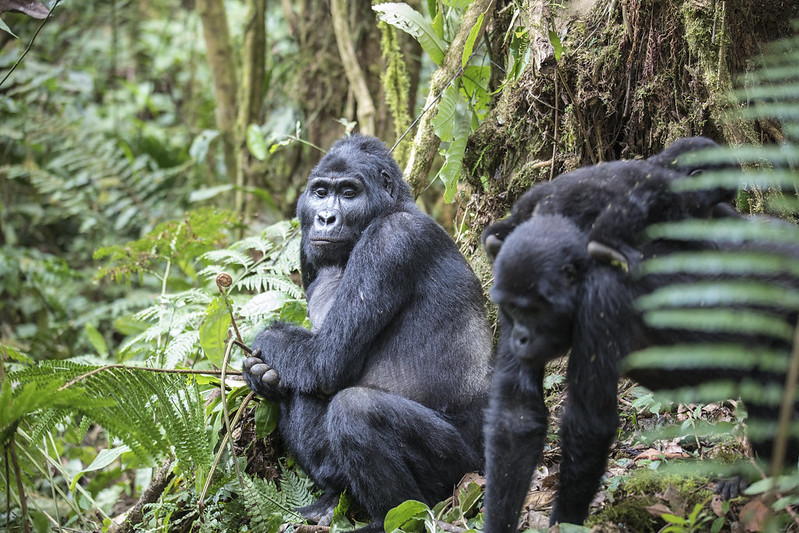Mountain gorillas: true or false, mountain gorillas are the most popular primates in the area. The massive apes are not only amazing but also fascinating to observe in their natural habitats and situations. They are the most visited primates in East Africa, with each gorilla hub attracting more than 10,000 people each year.
Because these primates are so well-known, people tend to jumble up facts about them, and some even create myths and speculations.
In this post, we will discuss some common facts and misconceptions concerning mountain gorillas in general.
We start with the truth.
Mountain gorillas inhabit mountainous woods.
Mountain gorillas are primates and a subspecies of eastern gorillas. The other subspecies of eastern gorillas are lowland gorillas.
Mountain gorillas are gregarious animals who live in groups of 10 to 15 or as individuals, headed by a male gorilla known as a silverback.
Mountain gorillas are an endangered species.
Mountain gorillas are herbivores that eat forest foods such as bamboo, leaves, shoots, fruits, and insects.
Mountain gorillas are massive creatures, reaching up to 220 kg for males and 150 kg for females.
Mountain gorillas dwell at great elevations in their environments.
Mountain gorillas are tracked in their forest habitats all year as part of a conservation strategy or endeavor.
Mountain gorillas share around 90% of their DNA with humans, which explains why they exhibit a few comparable habits and features. In fact, that is why they are bright and skilled with tools.
Mountain gorillas interact through sounds, gestures, vocalizations, and facial expressions.
Female mountain gorillas can have 2–6 children, occasionally somewhat more, during their lifespan.
Females are pregnant for around 8.5 months.
Infants spend the first five years of their lives with their natal group before wandering out to find other groups. For men, they form their own organizations.
Gorilla habitat destruction poses a threat to their existence. This is true because mountain gorillas can only thrive in forests; therefore, as more humans encroach on those trees, the gorilla habitat shrinks, threatening their survival.
some prevalent falsehoods and misconceptions.
Mountain gorillas are gone. No, they’re not. They are endangered, but not extinct.
Mountain gorillas devour humans. This is a complete falsehood. Gorillas are not carnivorous at all. They are infamous for fighting, stomping on and ripping apart their opponents. Be it a person or another animal.
Tourism threatens mountain gorillas. This is a complete falsehood. Actually, mountain gorilla tourism has helped rescue the gorillas by raising public knowledge about them, and via this private initiative, individuals would do things to promote the conservation of mountain gorillas.
Mountain gorillas are not adept climbers due to their large size and weight. This is a total myth. Mountain gorillas spend their time on their four knuckles, roaming on relatively level ground. They can readily climb trees when necessary.
Gorillas are afraid of water. This is not true; mountain gorillas are excellent swimmers. However, because they dwell at high altitudes, they are unlikely to spend much time near water.
Female gorillas cannot fight. So, interrupt their calm and watch what happens. Female gorillas may fight to defend themselves, but they do so seldom since fighting and guarding the group is the responsibility of the male gorillas, known as silverbacks. They are inherently built that way.
If you want to learn more about gorillas, you may visit them in their natural habitats, including Bwindi National Park in Uganda, Mgahinga National Park in Uganda, Volcanoes National Park in Rwanda, and Virunga National Park in the Democratic Republic of the Congo.





